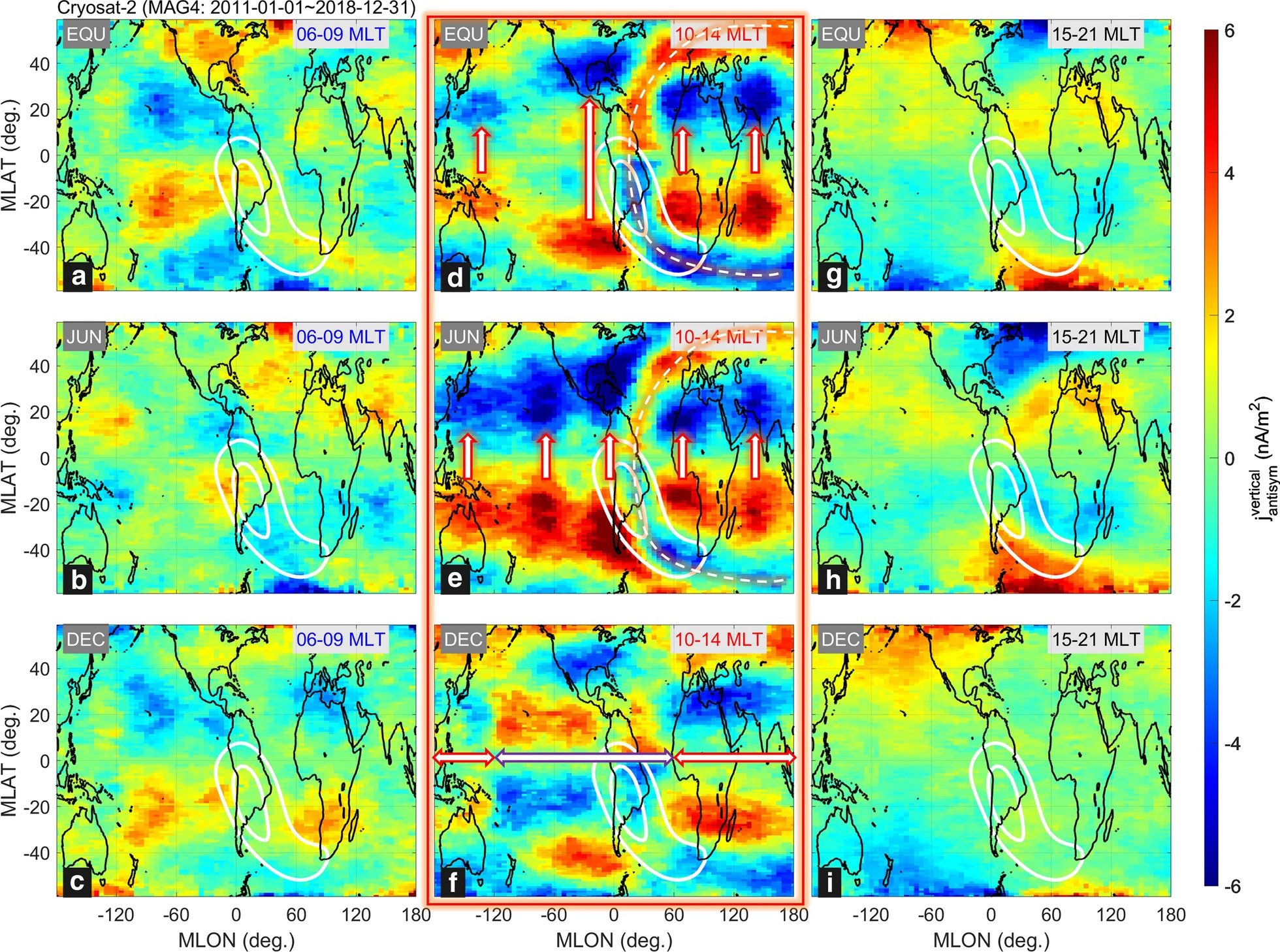Publié le 2 novembre 2020
A new study has shown that navigation magnetometer data from the CryoSat-2 and Gravity Recovery and Climate Experiment Follow-On (GRACE-FO) satellites can be used to diagnose weak low-/mid-latitude ionospheric currents. Analyses based on 8 years of CryoSat-2 data as well as ~ 1.5 years of GRACE-FO data reproduced well-known climatology of inter-hemispheric field-aligned currents (IHFACs), as previously reported by science-grade magnetometers onboard low-earth-orbit (LEO) satellites.
Geographic distributions of IHFACs estimated from CryoSat-2 data. Each row from the top corresponds to a season: combined equinoxes, June solstice, and December solstice.
Three columns from left to right are dawn (06–09 MLT), noon (10–14 MLT), and dusk (15–21 MLT)
The results also showed that C-shaped structures appearing in noontime IHFAC distributions conform to the shape of the South Atlantic Anomaly. The F-region dynamo currents were only partially identified in the platform magnetometer data, possibly because the currents are weaker than IHFACs in general and depend significantly on altitude and solar activity. For the first time, noontime F-region dynamo currents were reported at the highest altitudes ever of 717 km.
